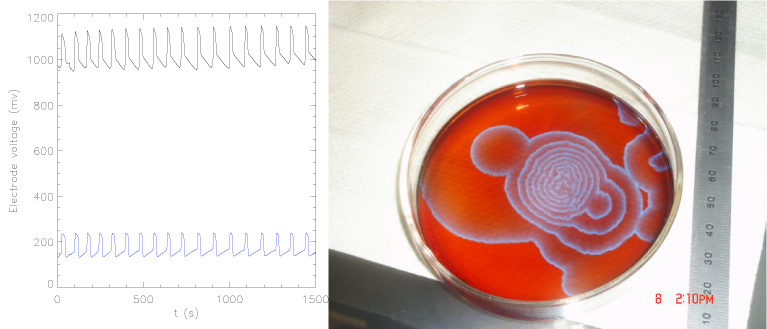Capstone (Math 451H) Spring 2008:
![]() Department of Mathematical
Sciences
Department of Mathematical
Sciences
![]()
Belousov-Zhabotinsky (BZ) Reaction
Oscillating chemical reaction is thought to be the key to many
regulatory processes in living cells, such as the mechanisms that
turn on and off the enzymes that transcribe DNA or the contraction
of a muscle. The BZ reaction has been the subject of on-going
research in chemistry, dynamical systems, and math biology. Our
project is to quantify the chemical oscillation in the well-stirred
BZ reaction, and visualize the pattern formation due to the
instability of traveling chemical fronts in the non-stirred BZ
reaction. Experimentally we follow several recipes for the
well-stirred BZ reaction, each group of students has their own. For
the non-stirred BZ reaction we use the package from "Science Kit and
Boreal Laboratories".
Computationally we solve the model equations for the reactions:
A system of ODEs for the well-stirred case and a PDE for the non-stirred case.
Finally we draw comparison between
experiments and computations.

On the left panel the figure shows the long-time measurement of the concentrations in well-stirred BZ reactions:
the black curve is for the catalyst concentration (Cerium) and the blue curve is for the Bromide concentration.
On the right panel the figure shows the concentric ring pattern in the non-stirred BZ reactions.